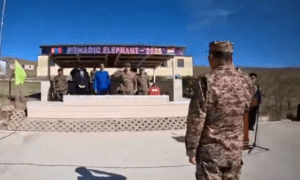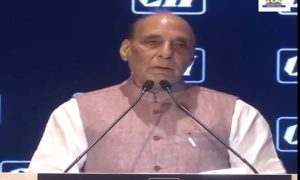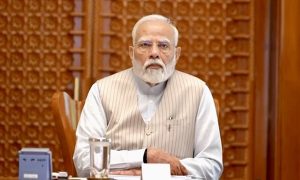A heatwave is singing the northern part of the country, with most places recording temperatures above 45 degrees Celsius.
Rajasthan’s Churu recorded a maximum temperature of 50 degree Celsius on Tuesday, said Ravindra Sihag, Scientist at Indian Meteorological Department (IMD). This was the highest temperature in the world yesterday, said Sihag.
National capital Delhi too sizzled on Tuesday, recording the highest temperatures in May in at least a decade at the Palam weather station and 18 years at Safdarjung station.
Back in 2010 in Palam and 2002 in Safdarjung, the same temperatures were recorded – 47.6 degrees Celsius in the former and 46 degree Celsius in the latter.
The temperatures come on the back of an exceptionally pleasant April in the capital; even the first half of May saw maximum temperatures well below normal in the city. Delhi does get hotter (sometimes), but only in June.
What is a heatwave
West Rajasthan, west Madhya Pradesh, south Haryana, Delhi, south Utter Pradesh, north Madhya Pradesh and Vidarbha are reporting severe heatwave conditions. On Tuesday, Ganganagar in Rajasthan recorded a temperature of 47 degrees Celsius, Bikaner, also in Rajasthan, recorded 47.4 degrees Celsius, Hisar in Haryana, 48 degrees Celsius, and Banda in UP 48 degrees Celsius – all in the severe heatwave category.
There are two criteria for recording heatwaves: A maximum temperature of at least 40 degrees Celsius which is 4.5 degree Celsius to 6.4 degrees Celsius higher than the usual; or a maximum temperature of at least 45 degrees Celsius for two stations in a sub-division for two consecutive days.
A severe heatwave is declared when the maximum temperature is at least 40 degrees Celsius and the departure from normal is more than 6.4 degrees Celsius or the actual maximum temperature is more than 47 degrees Celsius.
Health impact
The health impacts of heatwaves typically involve dehydration, cramps, exhaustion and/or heat stroke. The National Disaster Management Authority has losted following signs and symptoms:
• Ederna (swelling) and Syncope (Fainting) generally accompanied by fever below 39 degrees Celsius 102 degres Fahrenheit.
• Fatigue, weakness, dizziness, headache, nausea, vomiting, muscle cramps and sweating.
• Body temperatures of 40 degrees Celsius i.e. 104 degrees Fahrenheit or more along with delirium, seizures or coma. This is a potential fatal condition.
Relief from Thursday
Due to dry, north-westerly winds over plains of northwest India, central India and adjoining interior parts of eastern India, present heatwave conditions are likely to continue for the next 24 hours, IMD said in a statement adding that severe heatwave conditions are likely over pockets of Vidarbha on May 27, and the heatwave will continue over parts of Haryana, Chandigarh, Delhi, Rajasthan, Uttar Pradesh and East Madhya Pradesh on May 26 and 27.
The situation is likely to change from Thursday.
Under the influence of a western disturbance and formation of east-west trough (area of low pressure) in lower levels, rain and thunderstorms are likely in many parts of northwest India on May 28 and 29 following which heatwave conditions will abate.
“Super cyclone Amphan sucked out all the moisture from other parts of the country and very dry, northwesterly winds from land side was blowing over northwest India. Plus, we had clear skies and direct sunshine which also led to the peaking of maximum temperatures. There was no intense western disturbance which could change this kind of wind pattern or cause clouding,” said Kuldeep Shrivastava, head, regional weather forecasting centre.
According to National Disaster Management Authority’s guidelines for preparation of heat action plan released in 2017, heatwaves have caused 25,716 deaths between 1992 and 2016 across various states.






















 WhatsApp us
WhatsApp us